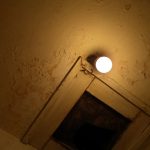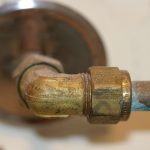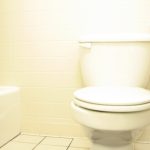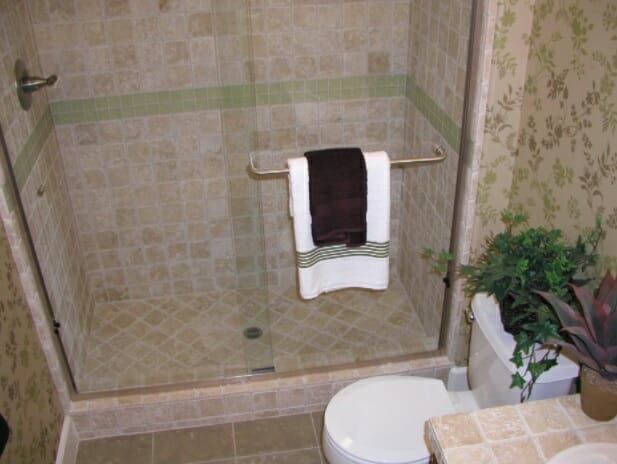On the surface, a bathroom is a sanitary space where we conduct our daily ablutions and carry out our bodily functions. But, in reality, a bathroom is much more than that to most people, and we treat it as a very special place in our homes. The bathroom is the most private room in the home, it has a lock, and it’s somewhere we get space to think. Many homeowners take a long hot bath to relax and unwind, and this can involve special rituals such as lighting candles or placing your favorite products in the hot water. It’s easy to take our bathrooms for granted, and this can cause a number of problems. In this article, we will take a closer look at five bad bathroom habits that you should break.
1.The Toilet is Not a Trash Bin
Many people seem to operate on the premise that there is a hidden trash compactor located somewhere near the bottom of the toilet. They seem to flush all kinds of items with no thought of the possible consequences for their home plumbing systems. People flush all kinds of products, such as wet wipes, feminine hygiene items, q-tips, floss, and many others. We’re not talking about a child putting things in the toilet (although that happens more often than you might think) this is a day to day activity to get rid of bathroom waste products.
The toilet and drainage system simply cannot handle these types of materials, and sooner or later, a clog will develop. In some cases, this can be removed with a toilet plunger or a plumbing augur. But, it can be more serious, and you may need to call out a plumber to get the toilet working again. A clog can cause a backup where the wastewater and any other waste re-enters the bathroom.
The only items that should go into the toilet for flushing are human waste and toilet paper. Everything else must go in the trash bin, or you may have an expensive repair bill to pay.
2.The Bathroom is Not a Sauna
At the end of a long hard day, it’s hard to beat the feeling of a long and relaxing shower to relieve the stress and tension. Unfortunately, those longer showers create a great deal of steam that should not be allowed to accumulate in your bathroom. Steam leads the development of mold spores in the pores of your tile grout and other hidden locations in your bathroom.
Mold is very toxic; the black mold found in bathrooms can lead to a number of health issues, including headaches, allergic reactions, and respiratory problems. Mold colonies can be cleaned away with a 50/50 mix of white vinegar to clean water in a spray bottle. Spray the affected areas and rub them with a clean cloth to remove the mold, but wear a mask and gloves to protect yourself.
Although you can clean the mold away, it will return if the underlying issue is not addressed. Taking a long hot shower or bath can waste a lot of energy and water, but for many people changing that habit is simply non-negotiable. If that’s the case, it’s a good idea to invest in a good bathroom exhaust fan that you can run during and after you’ve taken your shower to clear the steam before the mold is formed.
3.Flushing Long Hair into the Drains
One of the biggest contributing factors to a drain clog is hair. Our hair is a fibrous material, and it combines with other waste in the drain, such as dirt and soap scum to form a tough clog. A clog can be manually removed with a sink plunger in many cases, but the worst clogs may require a plumbing augur or even a professional plumber to remove. In this case, prevention is better than the cure, and you avoid many clogging issues by simply installing hair traps in each drain.
4.Using Hard Water
Many plumbing problems are caused by hard water, and this includes the bathroom. The scale deposits caused by the dissolved minerals in hard water narrow the plumbing pipes, and over time, this reduces the water pressure. Showerheads and faucets can be sprayed with a 50/50 mix of white vinegar and hard water to get rid of that unsightly white chalky scale. But, this only gets rid of the scale that you can see, and it doesn’t reach the internal surfaces of your plumbing pipes.
A buildup of scale inside your bathroom pipes can be accompanied by corrosion problems. The pipes are weakened in many areas, and this can lead to pinhole leaks that worsen over time. Eventually, larger cracks and breaks will occur in the pipes lead to water leaks and localized flooding. Water leaks can cause a great deal of damage in a short time, and this is expensive to fix.
Switching to softer water will help to keep the plumbing pipes clear to maintain your water pressure. The plumbing system will be less likely to fail when you need it most, and you can save money on plumbing repair bills. Installing a water softener is not as expensive as you might expect, and a certified plumber can set the system up for you in next to no time.
5.Using Chemical Cleaners
When they have a clog, many people automatically reach for a commercial cleaning product that contains harsh corrosive chemicals. These chemicals are bad for the environment, they can cause chemical burns, and they are hard on your plumbing pipes. The best way to remove a clog is with a cup plunger or a plumbing auger, also known as a snake. These tools are very affordable, and they will remove most clogs in your sink, tub, and shower stall.
If you want to make a switch to soft water, contact your local certified plumber. They will understand your local water conditions; they can advise you on the best water softener and install it for you.
By Giovanni Longo President Flood Brothers Plumbing
Giovanni Longo is a 3rd generation master plumber who has been practicing his craft and trade in the greater Los Angeles area for well over a decade and a half. A plumbing and hydraulics-engineering innovator, Giovanni’s particular world-class expertise focuses on dealing with challenging sewer system designs as well as resolving complex commercial and residential draining issues. As a certified Flood Mitigation expert, he is also well versed in a wide variety of water damage and remediation solution.





